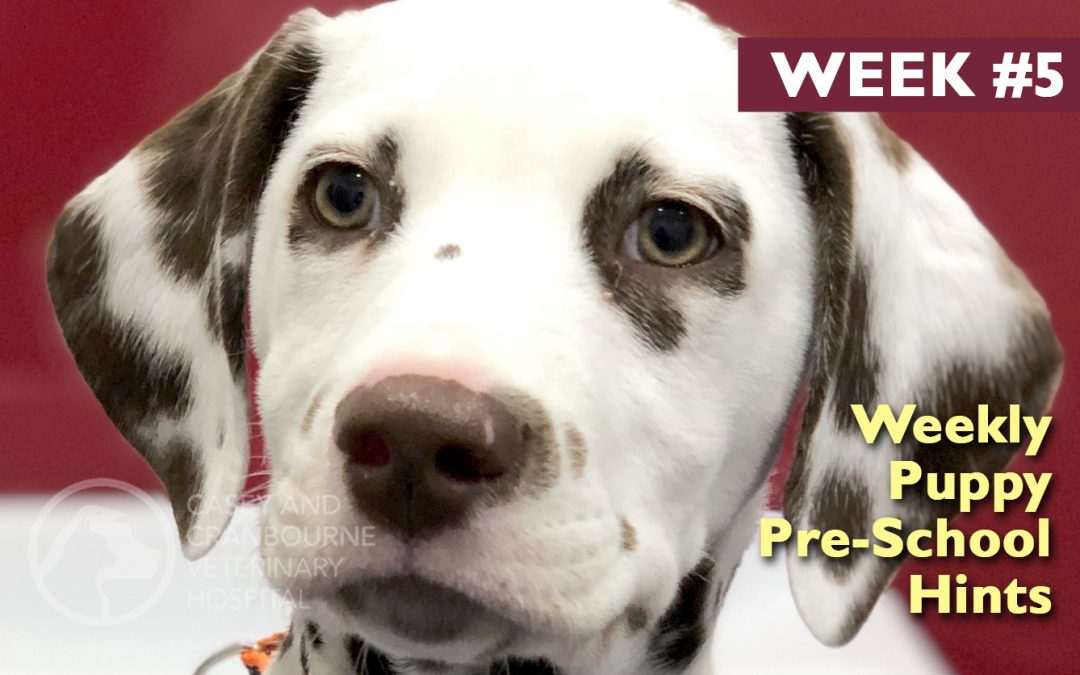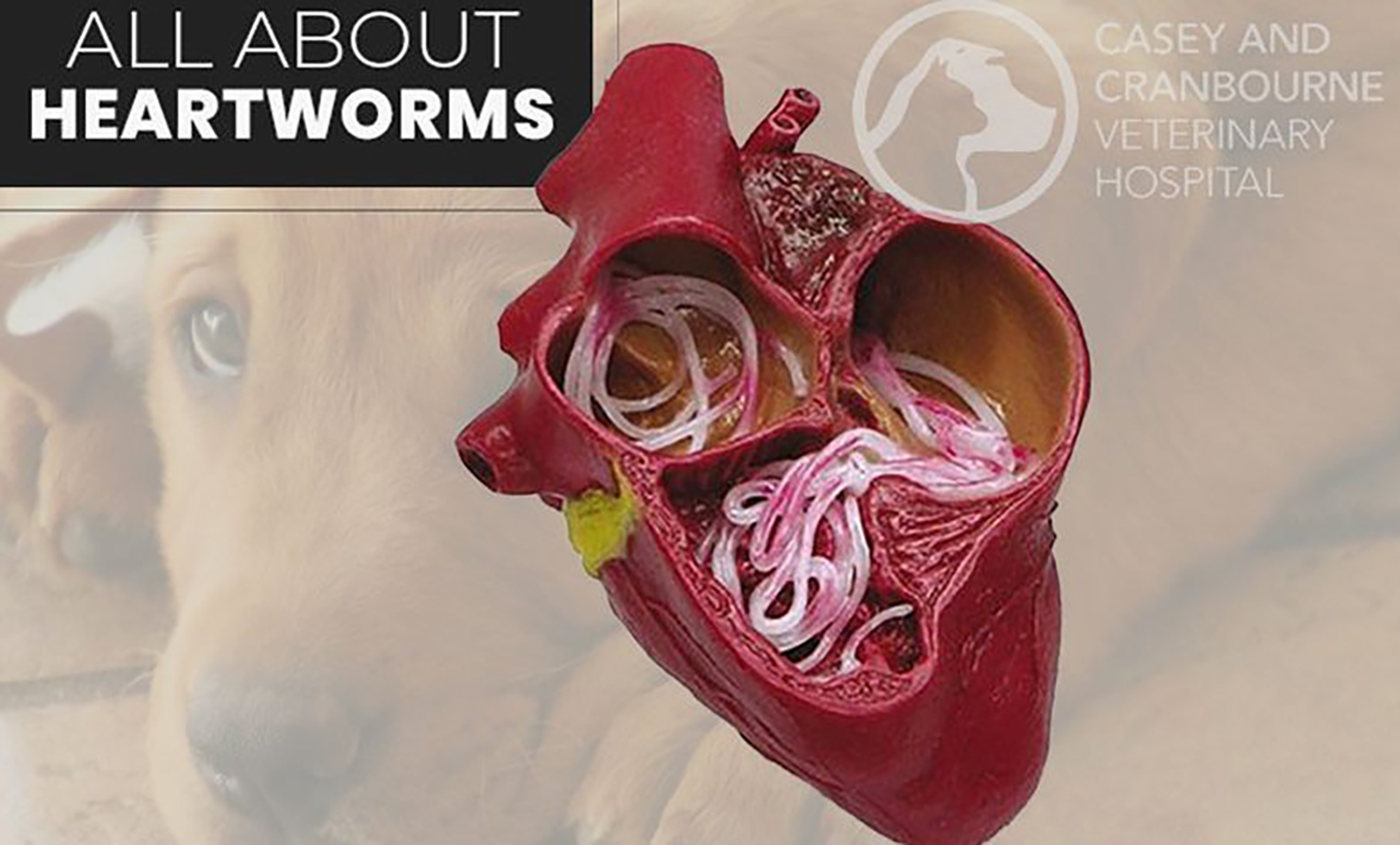This is our final article in our Puppy Preschool Hints and Tips series | the focus is on “Puppy’s Big Day Out!”
Preventative Health Care
 1. Vaccinations
1. Vaccinations
At 6-8 weeks of age, your puppy should have had their first vaccination and health check plus microchip implanted. This usually occurs whilst your puppy is still with the breeder.
At Casey and Cranbourne Veterinary Hospital, we use Nobivac C5 vaccines for your puppy’s second and third vaccination to complete their course.
This particular vaccine breaks through maternal antibodies, allowing us to vaccinate puppies earlier (from 10 weeks of age). This allows earlier socialisation as the puppy can be walked 7-10 days after this vaccination and can socialise with dogs you know are fully vaccinated.
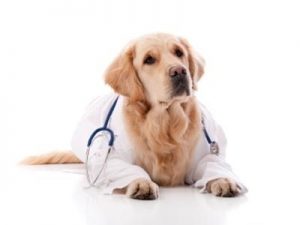 However, they do not have full Canine Cough protection until after their final C5 puppy vaccination given at 14-16 weeks old. Please avoid contact with unknown dogs until 7-10 days after the final C5 puppy vaccination has been given.
However, they do not have full Canine Cough protection until after their final C5 puppy vaccination given at 14-16 weeks old. Please avoid contact with unknown dogs until 7-10 days after the final C5 puppy vaccination has been given.
Ongoing yearly vaccination requirements for adult dogs.
Vaccinations are due every 12 months for the rest of your dogs’ life. A reminder will be sent to you in the post for your dogs first annual adult vaccination, 12 months after the date of their first C5 puppy vaccination (i.e. the one given between 10-12 weeks of age).
2. Heartworm prevention
Heartworm disease in dogs is contracted if they are bitten by an infected mosquito. It is becoming more prevalent in Victoria but is easily prevented. We recommend a heartworm injection that can first be given when your puppy is 3 months of age and this back kills to when your puppy was born. The next injection is given at 6 months of age and this lasts for 9 months whilst your puppy is growing. The heartworm injection for adult dogs is given at the same time as their vaccination, which is when they are 15 months old (ie a year after their C5 puppy vaccination given at 10-12 weeks old).
3. Intestinal worming
Intestinal worms are different to heartworm. Puppies require intestinal worming every 2 weeks until they are 12 weeks old, then monthly until 6 months of age then every 3 months throughout adulthood.
4. Flea and tick prevention
Fleas are external parasites and flea bites may cause Flea Allergy Dermatitis (FAD), one of the most common causes for skin allergies and irritation in dogs. Fleas can breed all year round but are most prevalent in summer.
Ticks are also most common in summer and there are three types of ticks-brown dog ticks, bush ticks and the potentially deadly paralysis tick. In Victoria, the paralysis tick has been found in coastal East Gippsland as far south as Bairnsdale but there have also been reported cases in inner Melbourne suburbs.
To prevent both fleas and ticks, we recommend Simparica, a simple, monthly chewable tablet. This can be purchased as a single tablet each month whilst your puppy grows and once they have reached the weight range in which they will remain for some time, you can purchase a 3 or 6 pack.
Microchip details
If you have not changed your puppy’s microchip details into your name, please make sure to do so. Having your correct details, especially phone numbers means your puppy will have a much greater chance of getting reunited with you if they ever get lost.
If you are unsure how to do this or need to check the details registered for your puppy’s microchip number, please ask one of the friendly vets or nurses at Casey and Cranbourne Veterinary Hospital to help you.
Diet
There are many commercially available diets for puppies on the market.
The important thing to know when feeding puppies is to choose a diet that is suitable for their breed and size. This means a small breed puppy that will remain under 10 kg as an adult will be fed puppy food for small breeds. A medium breed puppy whose weight will be between 10-25 kg as an adult is fed puppy food for medium breeds. A large breed puppy is one whose weight will be greater than 25 kg when they are an adult and will need to be fed puppy food for large breeds. Small and medium breeds are fed puppy food until they are 12 months old whereas large breed puppies continue growing until they are 18 months old so require puppy food until 18 months of age.
Teething and use of chew toys
The article last week talked about puppies mouthing/chewing and what are appropriate chew toys for puppies. Just to recap, its important to use chew toys that are recommended for puppies as their baby teeth are not strong enough to chew on harder chew toys or bones that might be appropriate for adult dogs with their strong adult teeth. Puppies will lose their baby teeth between 3-6 months of age however sometimes they can retain some of their baby teeth even after their adult teeth have erupted, the most common ones they may retain are their baby canine teeth. These teeth might need to be removed surgically and this can be done at the time of desexing.
Desexing
This is the procedure whereby male dogs are castrated and female dogs are spayed. Female dogs will not come into season until they are at least 6 months of age, with smaller breed dogs coming into season earlier than larger breeds. It is a good time to discuss the recommended timing of desexing when your puppy is in with one of our vets for their puppy vaccinations.
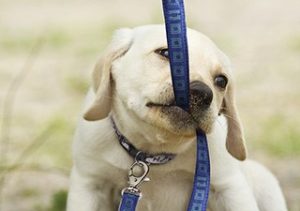 Walking on a loose lead
Walking on a loose lead
This is an essential tool to help your puppies learn how to walk well on a lead and will make it easier when you want to take them for a walk. Walking provides your puppy with opportunities for environmental enrichment, mental and physical exercise and social awareness. Puppies should be allowed the length of the lead (up to approximately 2 metres) to explore their surroundings without pulling or dragging their owners.
Training steps: Getting a puppy to walk on a loose lead
- Fit the puppy with a light lead that is appropriate to their size. The buckle or clip that attaches the lead to the collar should not be too heavy for the puppy’s neck.
- Gain your puppies attention (a treat can be used).
- Make sure that they are paying attention to you and then slowly move forward and encourage the puppy to follow you.
- If your puppy is pulling to get ahead of you call them back and ask them to sit. Once they have sat down, reward with a treat/good praise and repeat moving forward on a loose lead.
- If your puppy continuously stays near you whilst on a loose lead, ensure to offer constant praise and intermittently offer them treats.
- Practice at home before taking your puppy for their first very short walk.
TIPS
- Hold the lead loosely. If you hold the lead tightly the puppy is likely to respond by pulling against it. Only move forward when the lead is slack
- If the puppy is reluctant to move with the lead on, use lots of encouragement and a praise as they move forward
- If the puppy is surging ahead re-gain their attention with two gentle tugs on the lead to direct them back to your side.
 Bathing:
Bathing:
Puppies should be washed as little as possible. Washing is recommended only when they are dirty or smell. Due to the sensitivity of their skin, a puppy specific or canine oatmeal shampoo should be used on your puppy. If your puppy has dry, sensitive or easily irritated skin it may be best to consult your vet about the products available to help soothe their irritated skin and what products to avoid so that you don’t make it worse.
- Establish a regular location and routine for grooming, which involves the puppy standing.
- Brush in the direction of the hair growth, as brushing against the hair pattern may be uncomfortable for the puppy.
- Dogs with thick or long coats may need to be groomed every day to prevent painful mats and knots.
- Smooth-coated breeds may require grooming less frequently, but still keep to a routine so that it remains familiar and enjoyable.
- If a puppy needs professional grooming because of a breed requirement or special fashion cut, introduce the puppy early to a friendly groomer.
- It is also helpful to get your puppy used to the blow dryer that the groomer will use by turning on a hair dryer on low setting after washing or brushing your puppy. Puppies have very sensitive hearing, so place a snood over your puppy’s ears when using a hair dryer in their presence. This will get them used to the sensation of the hair dryer without the stress of the high pitched noise.
- Do not try to groom a puppy when they are in a highly playful mood, wait until they are more relaxed.
- A toy or tiny treats can be used to distract a puppy during the grooming process.
TIPS
- Puppies should tolerate their owners’ handling before strangers start examining or handling them
- Start handling your puppy in a relaxed, calm environment
- Keep practising handling as your puppy grows as this will help keep veterinary examinations and grooming stress free
- If the puppy becomes distressed the owner should stop immediately then ask the puppy to do something they are confident he can do like “sit” and reward him
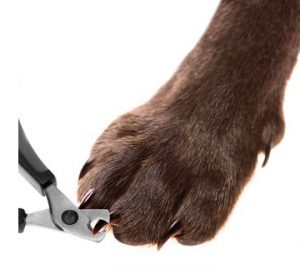 Nail trimming:
Nail trimming:
- Trim nails regularly to remove sharp tips and minimise accidental scratches during play.
- Be careful to avoid the blood vessels and nerves in the pink nail base.
- If the puppy has dark nails, the nail base may not be easily visible, consult a veterinarian or professional groomer about trimming the nails.
- Only use nail trimmers designed for dogs.
- Nail trimming should be introduced gradually.
- Initially, only a few nails should be trimmed each week until the puppy is used to the process.
- The more it is performed the better accustomed your puppy will be.
Don’t forget the dewclaws, which are extra toes on the front and sometimes back feet on some dogs. Given their location, they don’t touch the ground so never get worn down when walking. If left untrimmed, these can grow into the puppy’s skin or pads or might stick out, getting caught and potentially tearing.

